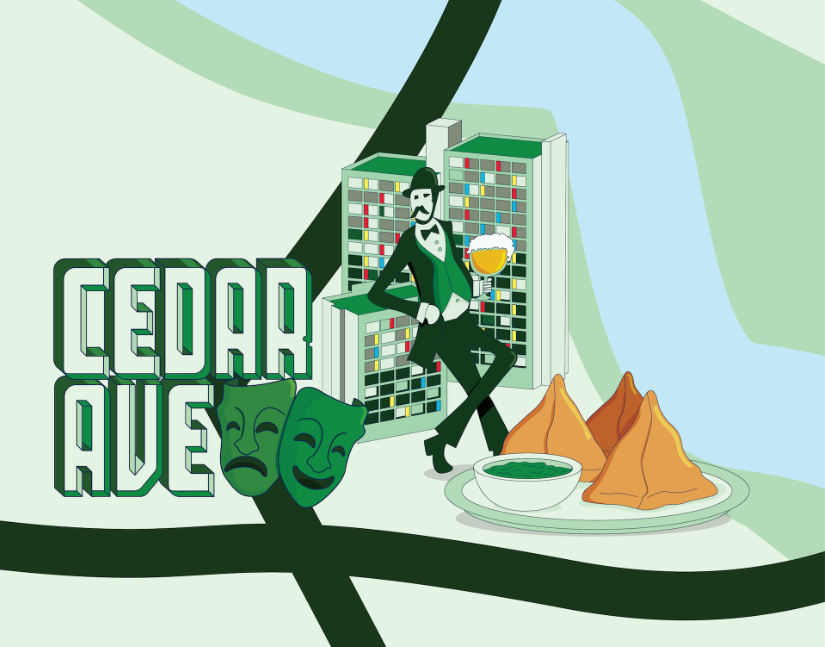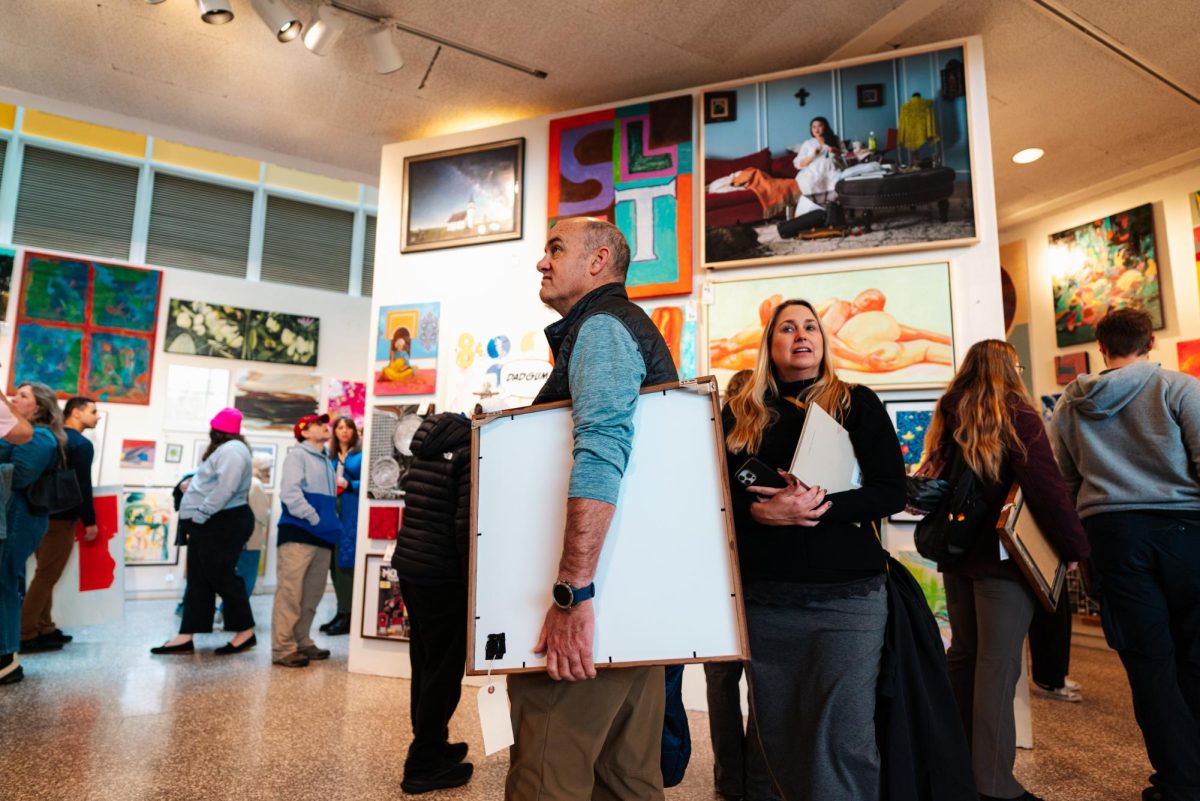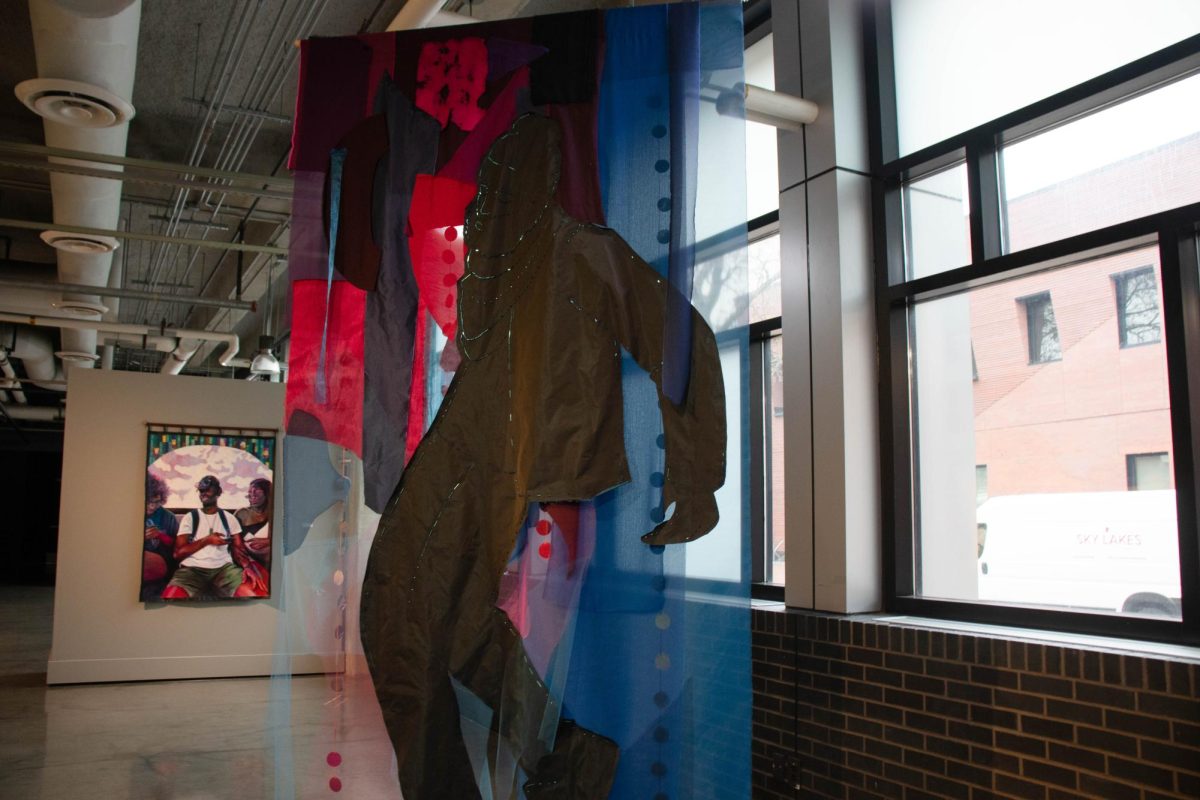WHAT: Toys on Roids WHEN: Until Dec. 24 WHERE: Soo Visual Arts Center, 2640 Lyndale Ave S ItâÄôs a sad day for any child when, drunk on the fortified wine of adolescence, they must round up the toys that once brought them so much joy, throw them in a box and move on to a world of lame dances and mediocre football. But no one ever really moves on; weâÄôll subconsciously harbor our love of Power Rangers and Barbie dolls well into senility. There will always be that unique elation that can only come from the toys of our youth. Sean TubridyâÄôs new gallery, suitably titled âÄúToys on Roids ,âÄù calls us back to our respective childhood eras with bulky robots and campy superheroes. Using vintage toys and shooting entirely on Polaroid film, Tubridy displays a deeply nostalgic and wholly comedic look at the pop culture of the past. ItâÄôs a show that is enjoyable for people of all ages, capturing everything from Batman to Gumby to My Little Pony with results that are absurdly funny. A&E had a chance to speak with Sean about toys, inside jokes and, sadly, the death of the Polaroid. What made you want to do a series using retro toys? Obviously as a kid I always liked toys and even as an adult I have a small collection, although itâÄôs grown bigger since this project took off. So itâÄôs just an excuse for a grown man to play with toys? [Laughs] Yeah, exactly. I can fill up some shelves in my office. I was a child of the âÄô70s and âÄô80s and obviously that stuffâÄôs had a resurgence in the movies, but at the time it was all comic books, TV shows and toys. I have a huge comic collection and I was a huge âÄúStar WarsâÄù fan. This show certainly was personal; a lot of these toys are from my childhood. Another magazine did an article, which was good, but the one thing they missed was that they called it all borrowed nostalgia. I think they thought maybe I was younger, but thereâÄôs really only a few toys in the show that werenâÄôt part of my childhood. ItâÄôs real nostalgia. And even though itâÄôs nostalgic, people who werenâÄôt alive at the time can still appreciate a lot of the shots. ItâÄôs interesting. I think my generation was probably the first one where a huge amount of pop culture kind of stuck. Everything I remember from when I was a kid has either stayed around or has had a resurgence in popularity. ItâÄôs like it never went away, whereas with my parents they talk about âÄúHowdy Doody âÄù and itâÄôs like, âÄúwhat are you talking about?âÄù So I think itâÄôs nice that people of all ages can, for the most part, know whatâÄôs in the show and understand it. Is there an overall message to the series or are you just trying to make people laugh? No, thereâÄôs no theme to it, at least nothing intentional. Some have little narratives and some are very specific in that you have to be a certain age or you have to recognize what the toy is and what itâÄôs referencing to kind of get the joke. Yeah, some of the jokes are, in a way, esoteric, from the picture of Han Solo and Greedo from âÄúStar Wars âÄú to the âÄúAmerican Gothic âÄú robot parody. Were you trying to appeal to a cult fan base? I think itâÄôs just whoever gets it, gets it. I didnâÄôt set out to target a certain audience; I just picked a lot of references that I knew and that I enjoyed. I think a lot of people arenâÄôt going to get some of the inside jokes, and thatâÄôs OK, but for the people who do I think it makes it extra special. When [the show] started out it wasnâÄôt even supposed to be a gallery or a book or anything, I just liked doing it. I started doing a few and realized it was kind of fun and then I approached the Soo to see if theyâÄôd be interested in doing anything with it and they came up with the idea of the gallery and the book. Why do it on Polaroid ? I like the challenge of trying to create these little environments and scenarios with Polaroid. Photographers know itâÄôs almost all digital now and you can take an image and if thereâÄôs something wrong with it, well you just go into Photoshop and you fix the color, remove people and move things around. And thatâÄôs all well and fine, but I like the challenge of doing it in camera and getting it all set up and perfect. ThereâÄôs no editing after; it comes out and thatâÄôs it. That kind of intrigued me and I think toys was a good way to do it. For me, using a Polaroid camera reminds me a bit of opening toys on Christmas morning and that sense of wonder. I think the combination of the two sit together very well. Polaroid is automatically very nostalgic. In February of 2008, Polaroid announced they would be discontinuing all types of instant film. How did you feel about that? Yeah, it was one of those things that wasnâÄôt entirely unexpected, but I think it was unexpected that it would happen all at once. They had kind of discontinued one type of film here or there over the years and then they announced they werenâÄôt going to make cameras anymore a year or two ago and that was the big indicator that something was going on. But I think most people had always imagined there would be a future for at least some instant film and that Polaroid would make an effort to get another company to continue at least some of the films. So that was disappointing and my gut reaction was to start a grass roots campaign to generate some interest and, in part, to gauge who else out there was interested in it and upset by this and to see if there was something that we could do. Since I started savepolaroid.com IâÄôve brought some other people on board and weâÄôve got a lot of interest in it. No oneâÄôs naïve and thinking Polaroid will change their mind, but the idea is to maybe convince another company that there is a small but dedicated market for it. Which seems pretty obvious, based on the afterlife of typewriters and vinyl. Yeah, itâÄôs interesting. Better things, if you want to call them that, come along and take over for other technologies, but usually those things stay around even in small parts. If you think way back to when photography first came out, people worried that painting was going to go away, but obviously it never went away; people still make paint. Instant film, although most people think of it as like the cheap Polaroid cameras that people take to parties, actually has a pretty dedicated artistic market. People use it to do all sorts of things that you just canâÄôt do with digital. So when one company basically holds all the cards and just says, âÄúweâÄôre out,âÄù it pretty much screws over a huge bunch of artists that use that as their medium. When I started the Polaroid campaign and started the show, I got a lot of interviews and a lot of them wrote that IâÄôm somehow anti-progress, as far as technology goes. Like IâÄôm stuck in the past with Polaroid and donâÄôt embrace digital, which couldnâÄôt be farther from the truth. And I definitely see how digital film is more convenient than Polaroid, but that was never the point of keeping it around. I just think when something new comes along it doesnâÄôt necessarily mean that what proceeded it has to be completely wiped out.
Art Ventures in Toyland

Image by Steve Maturen
Published November 19, 2008
0
More to Discover







